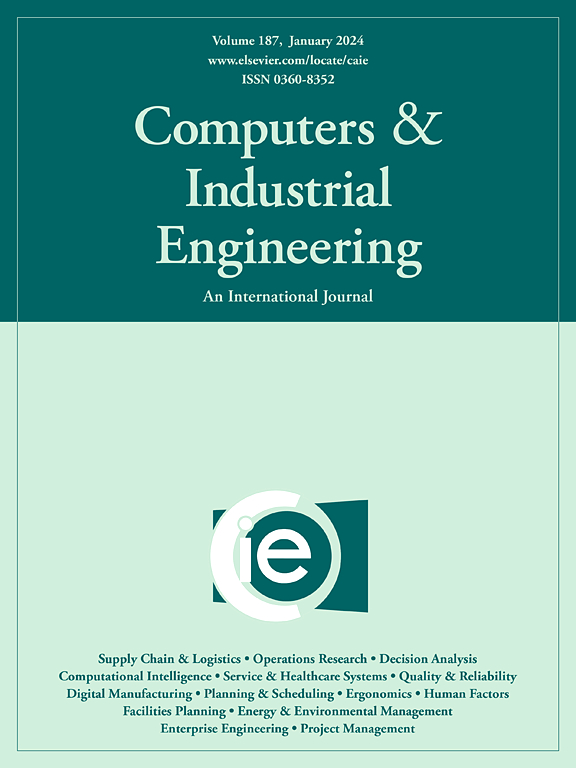利用 PSO 训练的量子回归神经网络预测备件需求
IF 6.7
1区 工程技术
Q1 COMPUTER SCIENCE, INTERDISCIPLINARY APPLICATIONS
引用次数: 0
摘要
本文章由计算机程序翻译,如有差异,请以英文原文为准。
Spare part demand forecasting using PSO trained Quantile Regression Neural Network
The after-sales service is a crucial component within the supply chain. Rapid upgrade of electronic product parts leads to the inability of part suppliers to maintain production lines all the time. After-sale service centers need to forecast the volume of the required repair parts to satisfy the needs of customers. In this paper, the demand for spare parts is forecast by considering both regular monthly and Last Time Buy replenishment volumes until the end of the product warranty period. Given the proven effectiveness of Quantile Regression Neural Network (QRNN) and Recurrent Neural Network (RNN) in time-series forecasting, this paper suggests a hybrid network structure combining QRNN and RNN for forecasting spare part demand. Furthermore, an improved Particle Swarm Optimization (PSO) method is designed to optimize the network training process. Real-world cases involving different categories of spare parts consumption, where the results demonstrate the effectiveness of the tailored mechanisms, such as RNN structure and PSO-inspired network training. Moreover, our proposed algorithm demonstrates better performance compared to the state-of-the-art algorithms in terms of six standard point forecast error metrics.
求助全文
通过发布文献求助,成功后即可免费获取论文全文。
去求助
来源期刊

Computers & Industrial Engineering
工程技术-工程:工业
CiteScore
12.70
自引率
12.70%
发文量
794
审稿时长
10.6 months
期刊介绍:
Computers & Industrial Engineering (CAIE) is dedicated to researchers, educators, and practitioners in industrial engineering and related fields. Pioneering the integration of computers in research, education, and practice, industrial engineering has evolved to make computers and electronic communication integral to its domain. CAIE publishes original contributions focusing on the development of novel computerized methodologies to address industrial engineering problems. It also highlights the applications of these methodologies to issues within the broader industrial engineering and associated communities. The journal actively encourages submissions that push the boundaries of fundamental theories and concepts in industrial engineering techniques.
 求助内容:
求助内容: 应助结果提醒方式:
应助结果提醒方式:


